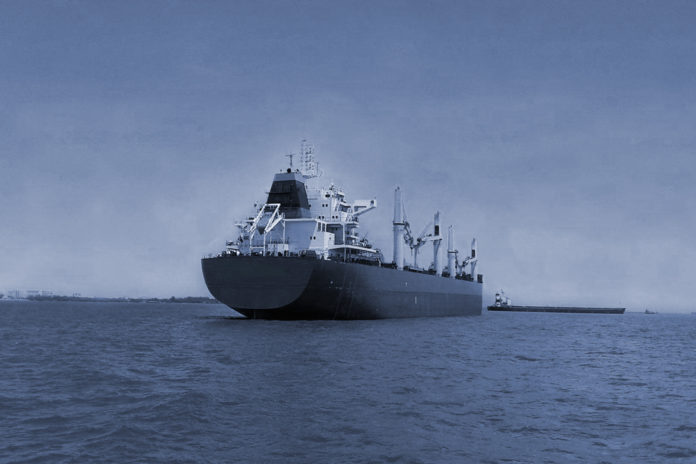
Rates and earnings in dry cargo shipping came under fierce pressure in the last weeks. Weak Chinese import demand and unwinding congestion are dampening prospects [ds_preview]
With the global economic outlook darkening and many trades constrained by geopolitical factors or inflation, dry bulk shipping has been faced with a rapid downward correction. Looking at index and earnings data in our market compass bar on the right-hand page, many readers must be rubbing their eyes: the Baltic Dry Index down by almost 38 % to its lowest in almost seven months, the time charter average of 180,000 dwt caper even 67 % below its level one month back. On average, capes are netting $ 7,133 but in many trades it’s much less – far below operating cost levels. Transpacific trips are currently rated at just 5,600 $/day. More worryingly, the much longer China-Brazil round voyage (100 days) only gets a tad more at 5,740 $, highlighting the depressed mood and expectations in the market.
Brokers and analysts see a number of negative factors converging. First of all, the iron ore and coal trades into China have been lacklustre all year. Iron ore imports are reportedly down 23 mill. to 627 mill. t in the first seven months as the ailing property and construction market dragged steel production down. Coal volumes even shrank by 60 to 138.4 mill. t. In this case, the »culprits« are increased hydropower and domestic coal mining in China. Secondly, port congestion in dry bulk shipping has begun to unwind rapidly recently.
Clarkson Research estimates that excess port congestion (due to the pandemic) decreased from 5.5 % of world dry bulk fleet capacity in Q1 to just 0.9 % in August. »In other words, around 4.5 % of the fleet has returned to active operation, implying that capacity utilization has decreased from 92 % in May to 87.5 % presently,« it reports. Significant new business for the largest bulkers in unusual trades such as coals from Indonesia to India was not enough to offset the sudden rise in tonnage availability due to waning congestion.
Little cheer in the Atlantic
Panamaxes, supramaxes and handysize bulkers started facing headwinds in the spot market simultaneously although losses for them are less dramatic ranging between 15 % and 20 %. Activity for panamaxes in the Atlantic has been stubbornly low for weeks, according to brokers. Grain volumes on the East Coast of South America are described as steady at moderate levels. What is more puzzling is the lack of minerals business – especially coals in the North Atlantic.
There are no quick explanations at hand other than the fact that extremely low water levels on the Rhine and high stocks in the ARA port range may have deterred charterers from buying more cargoes, brokers say. In reality, importation of steam coal should be increasing as European countries struggle to fend off energy shortages. Further, Russia should be exporting more of its coal ex Baltic Sea to destinations further afield since the EU ban on Russian coal took effect on 10 August. Positive ton mile effects remain elusive so far.
A small silver lining emerged for supramaxes in mid-August when partial export bans on miners in Indonesia caused a bit of a rush. Chinese and Indians reportedly ramped up their volumes from those miners still open for business to pre-empt shortfalls, thus causing a mini spike in freights on routes from Indonesia. Elsewhere, trade volumes for the geared ship types seemed to subside.
London broker SSY highlighted export restrictions on both steels and iron ore in India due to domestic shortages as a major drag on handies and supras in the region. From China, fertilizer and steel export volumes were missing, causing rising pressure on backhaul charter rates which had been extremely strong throughout the first half of the year.
Meanwhile, positive effects from the resumption of Ukrainian grain shipments – another staple trade for handies – are still thin on the ground. More geared bulkers are heading into the region but overall volumes remain low due to the high risks and costs involved. This is borne out by current readings of the Baltic index route for 58,000 dwt ships from Canakkale via the Black Sea to the Far East at around 19,800 $/day, far below its year-to-date average of $ 24,000.
The weakness in the geared bulker segment has also begun to affect larger multipurpose vessels who compete neck-and-neck with handy bulkers for certain cargo stems. Last done fixtures for large 28,000–32,000 dwt mpp ships in Asia were still at just over 30,000 $/day in July but levels are now correcting down, according to brokers. Much weaker levels are reported for the Atlantic where 30,000 dwt tween-deckers are said to be struggling to generate interest even at reduced rates of low/mid $ 20,000’s. (mph)
















